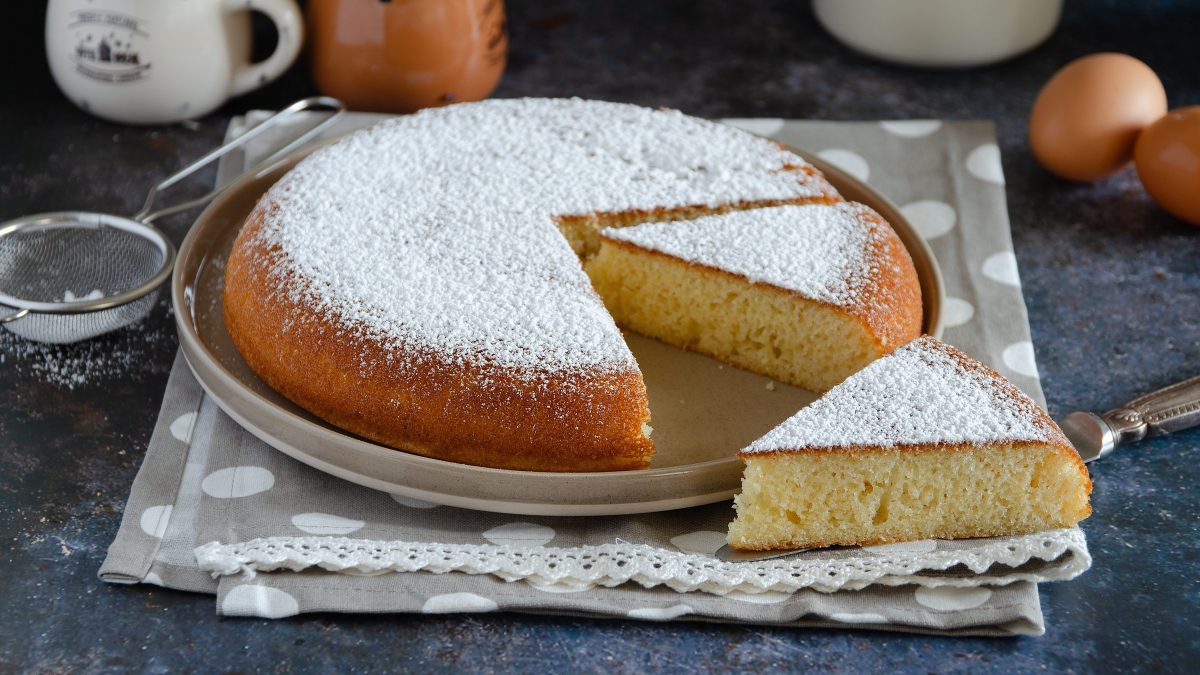
Vanilla Skillet Cake is a very easy, soft and quick dessert, perfect for breakfast or as a snack with a cup of coffee or tea. It is prepared with easy-to-find ingredients that are almost always available at home: eggs, sugar, flour, seed oil, milk, yeast and flavorings, such as vanilla extract or grated citrus peel.
Ideal for those who don't want to turn on the oven, just mix the eggs with sugar and vanilla with an electric whisk, pour in the milk and oil, then incorporate the sifted flour with the yeast, mixing delicately to avoid lumps. The mixture is then poured into a well-buttered pan and brought to the heat for about 30 minutes, turning it after 20 minutes like an omelette, so as to cook both sides evenly.
You will thus obtain a soft and delicious dessert, to be dusted with an impalpable layer of powdered sugar and also served as a happy ending to a dinner with guests.
What is a Vanilla Skillet Cake?
Skillet cakes have been a staple in American kitchens for centuries, especially in regions where ovens were not always available, and the stovetop was the primary means of cooking. These cakes were often made with basic pantry ingredients—flour, sugar, eggs, butter, and vanilla—creating a simple yet comforting treat that was easy to prepare. Over time, the skillet cake evolved into various forms, with the plain vanilla version remaining a classic choice due to its versatility and rich, buttery flavor.
During the Great Depression, this type of cake became particularly popular because it required minimal ingredients and could be baked quickly in a single pan, making it both cost-effective and efficient for families. Today, the plain vanilla skillet cake continues to be a beloved dessert in many American homes, often served with a dusting of powdered sugar or fresh fruit, embodying a sense of nostalgia and homestyle comfort.
Pro Tips for The Best Vanilla Skillet Cake
- Make sure your butter, eggs, and milk are at room temperature before starting. This helps create a smooth batter and ensures even mixing, resulting in a light and fluffy cake texture.
- When you mix the dry ingredients with the wet ingredients, mix until just combined. Overmixing can lead to a dense and tough cake. A few lumps are perfectly fine, as long as the dry ingredients are incorporated.
- Preheat your skillet over medium heat before adding the batter. A well-heated skillet helps the cake cook evenly and forms a nice golden crust on the bottom while keeping the interior soft and moist.
- Cooking the cake on medium heat is key. If the heat is too high, the cake may brown too quickly on the outside while remaining raw inside. If the heat is too low, it may take longer to cook, affecting the cake's texture.
- Covering the skillet with a lid helps trap heat and moisture, ensuring that the cake cooks evenly from all sides without drying out. It also helps the cake rise properly, giving it a soft and fluffy interior.
- Before removing the cake from the skillet, use a toothpick to check for doneness. Insert it into the center of the cake—if it comes out clean, it’s ready. If there’s still batter on the toothpick, let it cook a few more minutes.
- Let the skillet cake cool for a few minutes before slicing. This allows the cake to firm up slightly, making it easier to cut and serve while keeping its structure intact.
Can I Add Anything Else to This Skillet Cake?
If you like, you can enrich it with chocolate chips, raisins or pieces of apple and replace the milk with 200 grams of whole plain yogurt.
How Do I Keep My Cake From Sticking to The Skillet?
To prevent your cake from sticking to the pan, make sure to properly grease the skillet before adding the batter. Use butter or oil to coat the entire surface of the pan, then lightly dust it with flour, tapping out any excess. Alternatively, you can use a non-stick cooking spray. If you’re using a cast-iron skillet, seasoning it properly can also help with non-stick properties.
What Can I Serve This With?
Garnished with tufts of whipped cream, funfetti, cut and filled with hazelnut cream, jams and preserves , it also turns out to be an excellent idea for celebrating a children's birthday.
Can I Make It Ahead of Time?
Yes, a skillet cake can definitely be made ahead of time! To do so, bake the cake as usual and then allow it to cool completely. Once cooled, you can cover it tightly with plastic wrap or store it in an airtight container. Keep it at room temperature for up to 2–3 days or refrigerate it if you want to extend its freshness. If you're serving it later, simply warm it up in the skillet over low heat or in the microwave for a few seconds before serving.
Does It Freeze Well?
Yes, skillet cake freezes well! To freeze it, first allow the cake to cool completely. Then, wrap it tightly in plastic wrap or aluminum foil, and place it in an airtight container or freezer-safe bag. It can be stored in the freezer for up to 2-3 months.
When you're ready to enjoy it, let it thaw at room temperature for a few hours or reheat it in the microwave or skillet. This way, you'll still have a delicious, freshly warmed cake even after freezing.
How to Store Any Leftovers
To store any leftover skillet cake, allow it to cool completely before storing. Once cooled, cover it tightly with plastic wrap or place it in an airtight container. Keep it at room temperature for up to 2–3 days. If you want it to last longer, refrigerate it for up to a week.
Ingredients
How to Make Vanilla Skillet Cake

Crack the eggs into a bowl, add the sugar and vanilla and start mixing them with a whisk.
Crack the eggs into a bowl, add the sugar and vanilla and start mixing them with a whisk.
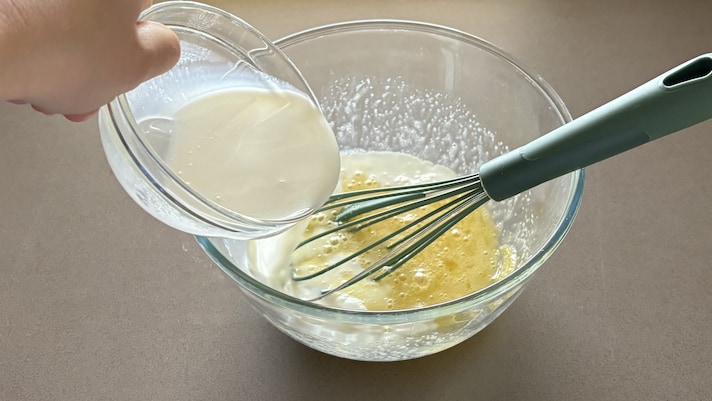
Pour in the milk slowly and the seed oil, continuing to mix.
Pour in the milk slowly and the seed oil, continuing to mix.
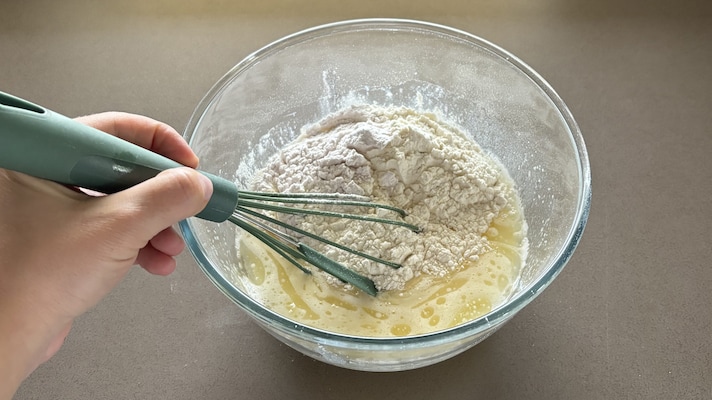
At this point, also incorporate the flour and yeast, previously sifted.
At this point, also incorporate the flour and yeast, previously sifted.
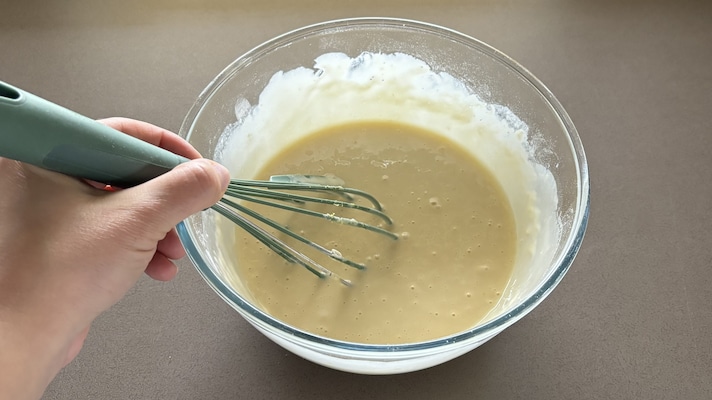
Mix everything well until you get a smooth, creamy mixture without lumps.
Mix everything well until you get a smooth, creamy mixture without lumps.
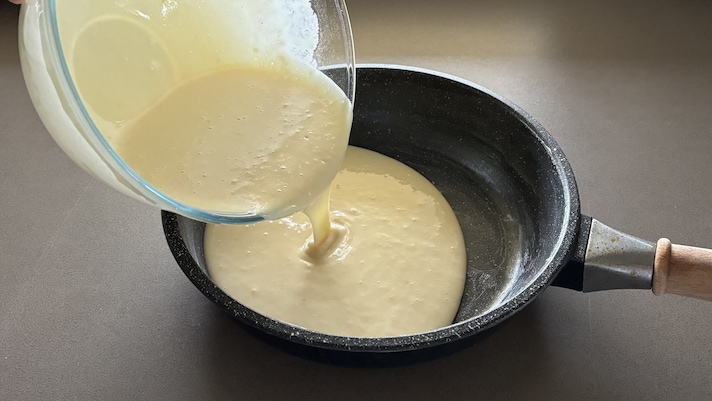
Butter a non-stick pan with a diameter of 20-22 cm and pour the mixture into it.
Butter a non-stick pan with a diameter of 20-22 cm and pour the mixture into it.

Cover with the lid, place the pan on the largest burner and set the heat to low. If you have a flame spreader, we suggest using it so that the heat is spread evenly.
Cover with the lid, place the pan on the largest burner and set the heat to low. If you have a flame spreader, we suggest using it so that the heat is spread evenly.
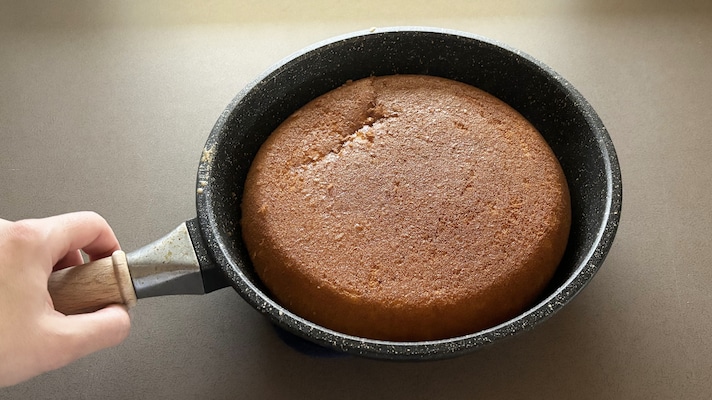
Bake the cake for 20 minutes, then gently turn it upside down with the help of the lid or a plate and continue cooking for 10 minutes. Before turning off the heat, do the toothpick test to check the internal cooking.
Bake the cake for 20 minutes, then gently turn it upside down with the help of the lid or a plate and continue cooking for 10 minutes. Before turning off the heat, do the toothpick test to check the internal cooking.
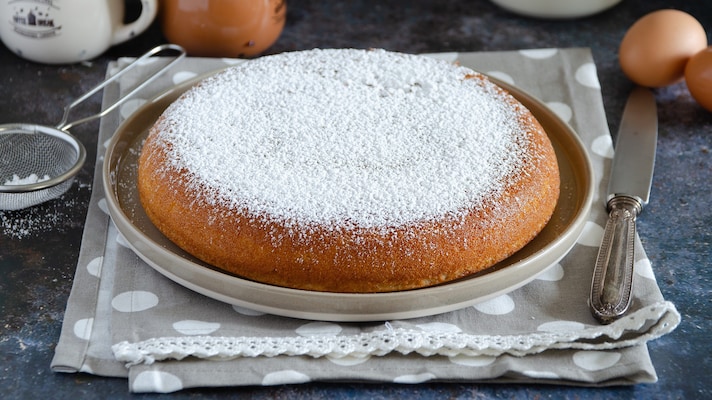
Transfer the cake in the pan onto a serving plate, let it cool and sprinkle it with icing sugar, then bring it to the table and enjoy it!
Transfer the cake in the pan onto a serving plate, let it cool and sprinkle it with icing sugar, then bring it to the table and enjoy it!
;Resize,width=767;)
